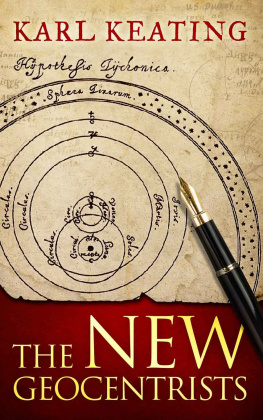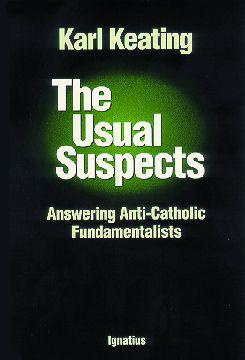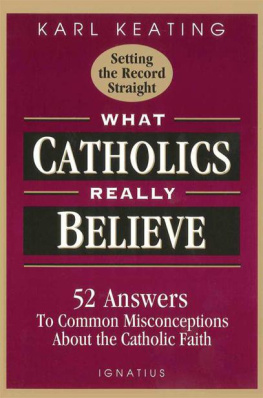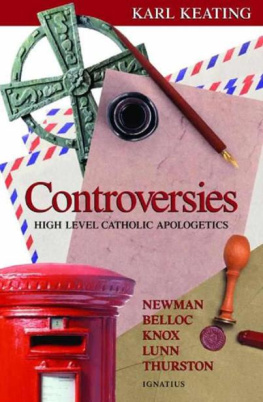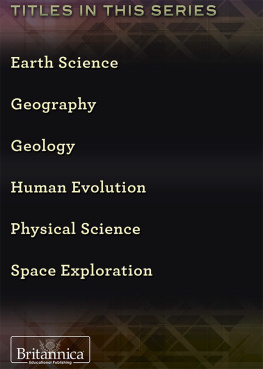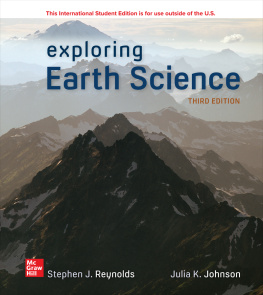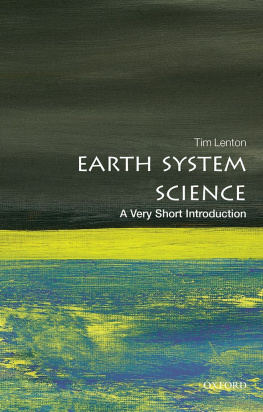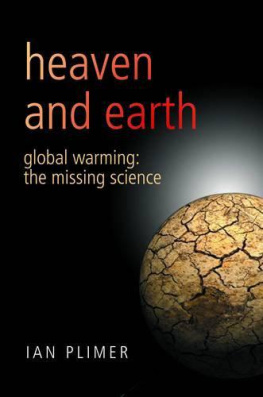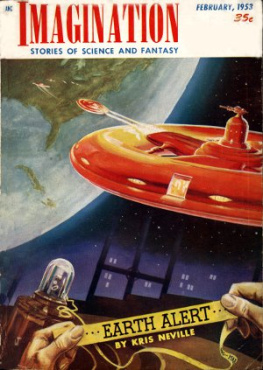The New Geocentrists
Karl Keating

Nonsense can be defended but by nonsense.
Samuel Johnson, Life of Johnson
False ideas may be refuted indeed by argument, but by true ideas alone are they expelled.
John Henry Newman, Apologia Pro Vita Sua
You say that we go round the Sun. If we went round the Moon it would not make a pennyworth of difference to me or to my work.
Sherlock Holmes, A Study in Scarlett
CONTENTS
Preface
When I was a boy, I collected and read nearly all of Edgar Rice Burroughs books. Best known as the creator of Tarzan, he wrote more than seventy works of adventure and fantasy. Most of them appeared in series. The books printed during his lifetime included twenty-two in the Tarzan series, ten in the Mars series, four in the Venus series, and six in the Pellucidar series. It was this last series I found most intriguing in its setting. It is one thing to set stories on Mars or Venus; it is something else to set them within the Earth.
The conceit of the Pellucidar books is that the Earth is hollow, its crust being only five hundred miles thick, making for a concave world about seven thousand miles across. In the center of the internal sky is a tiny star that gives perpetual light to the land of Pellucidar, which knows no night. Sight is not lost at a distant horizon because there is no horizon. The land curves up, not down, and sight is lost only in far-off mists or when the up-sloping terrain gets lost in the brilliance of the star.
In Burroughs telling, Earths interior land surface is greater than its exterior land surface: where there is land on the outer surface, there is water on the inner, and where there is water on the outer surface, there is land on the inner. This results in large continents with plenty of room for the wide variety of creatures with which Burroughs liked to inhabit his worlds.
The first book in the Pellucidar series, At the Earths Core , was published in 1914. In that year there still were largely unexplored regions of the world, chiefly in the Arctic and Antarctic. This allowed Burroughs to provide for entrances to Pellucidar from the outer surfacelarge holes at the polesand to give the reader an excuse for his suspension of disbelief. Burroughs schematic would not be so easily accepted by todays reader, given that he is likely to know that every square inch of the globe has been mapped and that a large entrance to Pellucidar, if such an entrance existed, would have been discovered decades ago. In 1914, a writer still could get away with such a setup, even if barely.
Fast forward half a century. Imagine my surprise to discover someone who actually believes that the Earth is hollow. This is the message presented in a booklet called A Hollow Earth? The Bible Says Yes! The author is Jim Wilhelmsen, who appears to be a Fundamentalist Protestant. His opening lines give the flavor of the rest of his booklet:
Modern science will tell you that it is impossible for the Earth to be hollow. This same modern science will tell you man came from a monkey and there are no such things as UFOs. The official position of the Church (Holy Roman version) was that the Earth was flat. The emerging sciences began to realize that this was wrong. Today in the minds of too many people, the Bible has lost its validity because men were wrong! It is funny that the Bible declared that the Earth was round long before there was a modern science or the Church (Holy Roman type).
There is no reason to discuss Wilhelmsens arguments for a hollow Earth. They are risible. He seems sincere, yet he is sincerely wrong. He is convinced that his interpretation of Scripture is correct and that the sacred text, if read with open eyes, will reveal the truth of an interior world. It will not. He has misunderstood and misapplied Scripture, though he is not conscious of doing so. He has seen in the Bible geographical and cosmological proofs that simply arent there.
In these attitudes he is like others who find themselves compelled, chiefly through their interpretations of Scripture, to promote a scientific theory thought ludicrous by nearly all of their contemporaries. These others, unlike Wilhelmsen, have some history to work from and arguments that, though weak, are not always obviously so. Even their biblical exegesis is better laid than his. Yet, for all their relative sophistication, they too are wrong.
Their wrongness is more consequential than his because they have a wider following than he ever could hope to have, and their theory is incorporated into a theological and cultural critique that has no analogue in his system. He has little chance of bringing anyone to his side. They have such a chance, and they want to take advantage of it.
They are the new geocentrists.
What This Book Is and Isnt
This book is titled The New Geocentrists , not The New Geocentrism . The focus is more on the people than on their scientific and religious claims. Their claims are not neglected, but I make no attempt at comprehensiveness and feel no obligation to do so. Todays geocentrists have worked up dozens of main and hundreds of subsidiary arguments spread over thousands of book pages and innumerable web pages. It would be as tedious to refute those arguments, one by one, as it is to read themmore tedious, actually, since it often requires a full paragraph to correct a single wrongheaded sentence, and there are many wrongheaded sentences in the works of the new geocentrists.
Geocentrists are oblivious to problems in what they write. They are confident in their science and exegesisconfident to the point of not seeing weaknesses in their position. They think their logical armor has no chinks. They betray no doubts, no signs of hesitancy. Conflicting evidence does not exist or is dealt with summarily. The only logical flaws are with those who fail to accept the geocentric thesis.
That thesis is gaining adherents. Its proponents string together innumerable names, dates, equations, and assertions. Can advocates who have so much to say and who say it so insistently be wrong? More and more people are answering in the negative. They find the cosmological and scriptural ideas put before them by geocentrists to be convincing, even compelling. Flaws in the geocentrist argument are seldom obvious to the intended audience, which is not the scientist or the theologian but the layman, particularly the layman who is susceptible to sweeping claims and to hints of conspiracies.
Those who are coming to accept the geocentric thesis are not doing so because they can follow the physics and can work through the mathematics. They take the representations of the new geocentrists on faith. They think them to be reliable exponents of the facts and trustworthy interpreters of the meanings behind the facts, and they give them extra points for speaking in opposition to settled opinion.
This last is no small thing. There is an attractiveness in thinking oneself part of a group that has been preserved from errors that infect the rest of society, whether those errors are political, cultural, scientific, or religious. There is a sense of anticipation in being part of a movement that might become the wave of the future. There is satisfaction in being privy to knowledge that is unknown to the generality of mankind. It is no accident that one of the publications that repeatedly has given geocentrism room in its pages is called The Remnant .
Whether Protestant or Catholic, most geocentrists operate with a conspiracist mindset, though this seems to be more marked (and more remarked about) among the Catholics. Whatever their faith, geocentrists think mainstream scientists have colluded to keep the truth of geocentrism away from the publicsome, because their livelihoods depend upon continued acceptance of the heliocentric model; others, because they wish to promote irreligion, the expansion of which would be retarded if geocentrism were accepted widely. It is the goal of todays geocentrists to expose this underhanded work. They do this not just through scientific arguments but through scriptural and theological ones.
Next page
